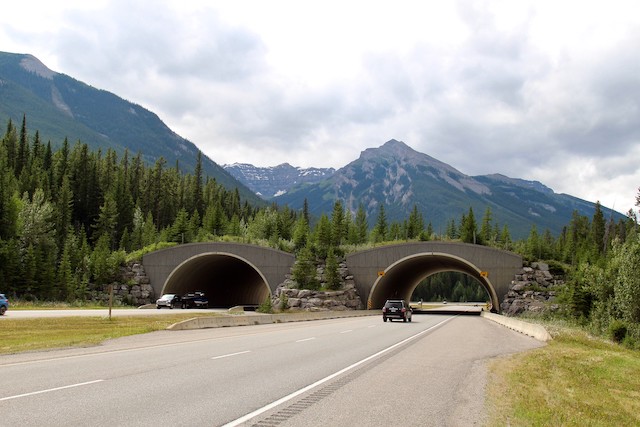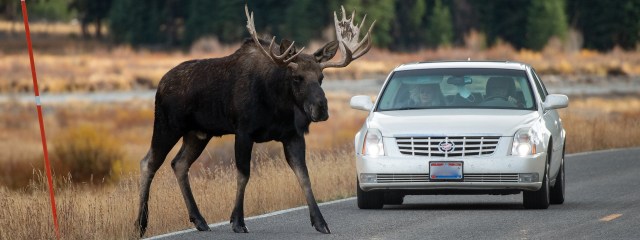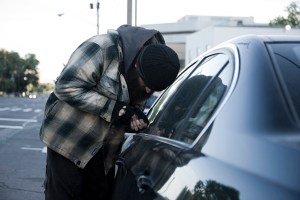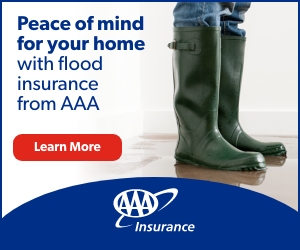An estimated one to two million crashes between a motor vehicle and large animal occur every year in the United States, according to the Department of Transportation. Once thought to be strictly a problem in large, rural states, such crashes are becoming increasingly common in more urban areas as roads and other construction expand into previously undeveloped animal habitats.
Fortunately, there is an effective, well-supported solution to this growing problem: wildlife crossings. Unfamiliar? We don’t blame you. These roadway features are a still rare find, especially in the densely populated Northeast. So, what exactly are wildlife crossings and when can we expect to see more?
Wildlife-Vehicle Collisions by the Numbers
Before we get to the solution, let’s define the problem. If you live in an urban area, you may not be fully aware of just how prevalent WVCs are. The scale and scope of the issue, however, quickly comes into focus once you look at the numbers. A study from the Federal Highway Administration found the following:
- There are approximately 300,000 reported wildlife-vehicle collisions per year in the U.S. Most researchers believe the actual number is much higher, however, as many such collisions are not reported for a variety of reasons. The FHWA estimates there are 1-2 million WVCs annually.
- Roughly 5% of WVCs cause human injury, resulting in 26,000 injuries per year.
- The vast majority (as high as 90% in some states) involve deer.
- More than 90% of collisions with deer and nearly 100% of collisions with larger animals such as elk or moose result in vehicle damage.
- The average cost of repairing a vehicle after colliding with a deer was estimated at $1,840. For collisions with elk and moose, the cost increases to $3,000 and $4,000, respectively.
- In most cases, an animal that has been hit by a vehicle dies immediately or shortly after a collision.
What Is a Wildlife Crossing?
A wildlife crossing is a manmade structure that allows animals to safely cross over or under a roadway. It is designed to act as an extension of the natural landscape, connecting animals to surrounding areas that are otherwise cut off by the road. In doing so, it prevents habitat loss and fragmentation, as well as reduces the prevalence of VWCs.
There are many different types of wildlife crossings. Some of the most popular include green bridges, overpasses covered in grass and other vegetation, and culverts, tunnels and passageways running underneath a roadway.

Do Wildlife Crossings Work?
The answer is a resounding yes. Research by Montana State’s Western Transportation Institute in 2009 found wildlife crossings used in combination with fencing reduced WVCs by 86%. More recently, a 2021 study from the U.S. Forest Service found that wildlife crossings nearly eliminated WVCs completely (a 97% reduction).
There are numerous real-life examples supporting these findings. Animal mortality dropped 93.5% in Florida’s Paynes Prairie State Preserve after a wildlife crossing was constructed. A combination of over- and under-passes along Colorado’s State Highway 9 reduced WVCs by 88%. Since completion of a wildlife underpass across Oregon’s Highway 97 in 2012, the roadway has seen more than a 90% drop in collisions with animals.
Similar success stories have been reported the world over, including Brazil, Mexico, Australia and the United Kingdom. In fact, the most oft-cited wildlife crossing is found just north of the border in Canada’s Banff National Park.
As visitation to the park surged in the 1970s, so too did traffic congestion on the section of Trans-Canada Highway running through the area. More motorists also meant more WVCs. To combat the growing problem, officials constructed several underpasses along the road in the 1980s. In 1996, the first wildlife crossing bridges were constructed.
Today, there are six overpasses and 38 underpasses along this section of the highway. Combined with fencing, they have reduced WVCs by more than 80%, including a 96% drop for deer and elk. As Western Transportation Institute researcher Tony Clevenger told Canadian Geographic, “This is Canada’s biggest conservation success story.”
The Future of Wildlife Crossings
Although wildlife crossings have proven to be highly effective, they are still underutilized. That should begin to change in the near future.
Included in the massive bipartisan Infrastructure Investment and Jobs Act passed last year is funding for a Wildlife Crossings Pilot Program. The program will allocate $350 million over five years to federal, state and local governments and agencies to construct wildlife crossings in the U.S. that reduce WVCs and improve habitat connectivity for animals.
Learn more about traffic safety.
10 Thoughts on “Why We Need More Wildlife Crossings in the U.S.”
Leave A Comment
Comments are subject to moderation and may or may not be published at the editor’s discretion. Only comments that are relevant to the article and add value to the Your AAA community will be considered. Comments may be edited for clarity and length.

















Brilliant article, since the early the 1990’s I was always concern about ways of saving the lives of these innocent animals. So proud of the work being done by all the different government agencies on combating this loss of lives. As ms. Michele Chester mentioned, we should do our apart in which ever way possible to save nature, for a better tomorrow. Thank you.
Nice article but one critical item was omitted. Specifically in the Western states, certain species migrate from Summer range to Winter range as snows start to come. Specifically, that includes Elk, Mule Deer, and Antelope. They use traditional routes and the migrations often cross main highways. This is being worsened by housing development occurring in critical areas. Not as much a problem in the east as Whitetail deer do not migrate as far and are more disbursed in charecter.
Thank you for addressing this very important topic. Let’s act new to help wildlife!
How do the deer know where to cross? Can they read?
Deer crossing Sign
http://www.youtube.com/watch?v=RFCrJleggrI
It’s not rocket science — the animals are smart, they’ll use the crossings!
Build them and bill the taxpayer, i’ll gladly pay for the crossings for the babies!! We get billed for almost everything else, and for many things that we don’t want, or need, or hate.
Thank you for your article. Wildlife do need more protection I like the idea of Wildlife Crossings being built. About 90% of drivers are unsafe and do not belong driving. Wildlife needs more protection.
YES! Thank you for writing on this.
Deer do sometimes eventually learn to stop before crossing a road/highway. 10 years ago we had numerous deer vehicle accidents on the local road that I live on in the town of Trenton NY. Then the number of dead deer seemed to go down for some reason. So I began to watch what deer were were doing differently and began to see some deer stop and look both ways ( what seemed hard for me to believe ) before crossing the road ! As time went on more and more deer stopped and looked before crossing the road. We still have numerous deer in this area but I have seen only one dead beside the road, that one right in front of my house hit by a pickup. Animals are not dumb they learn to adapt to their environment to survive. I know that this is hard to believe, but I have seen Deer stop before crossing the road.
I SUPPORT wildlife crossings! We owe it to the animals and ourselves!!! There should be MORE and for LARGER animals as well as little ones.
Thank you , Diane, I also care about little animals ‘ safety. I drive carefully , but most people do not..I wish they would.